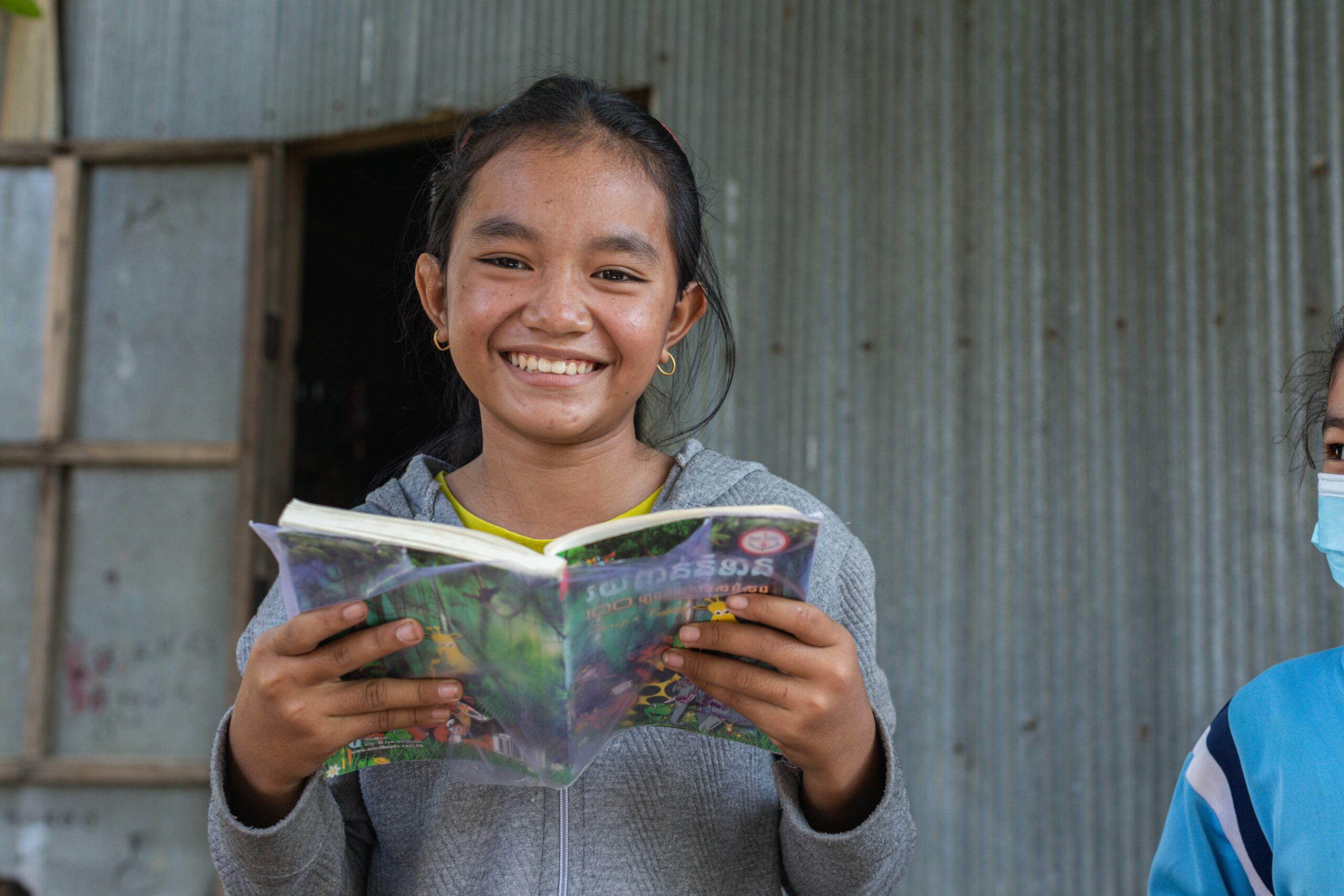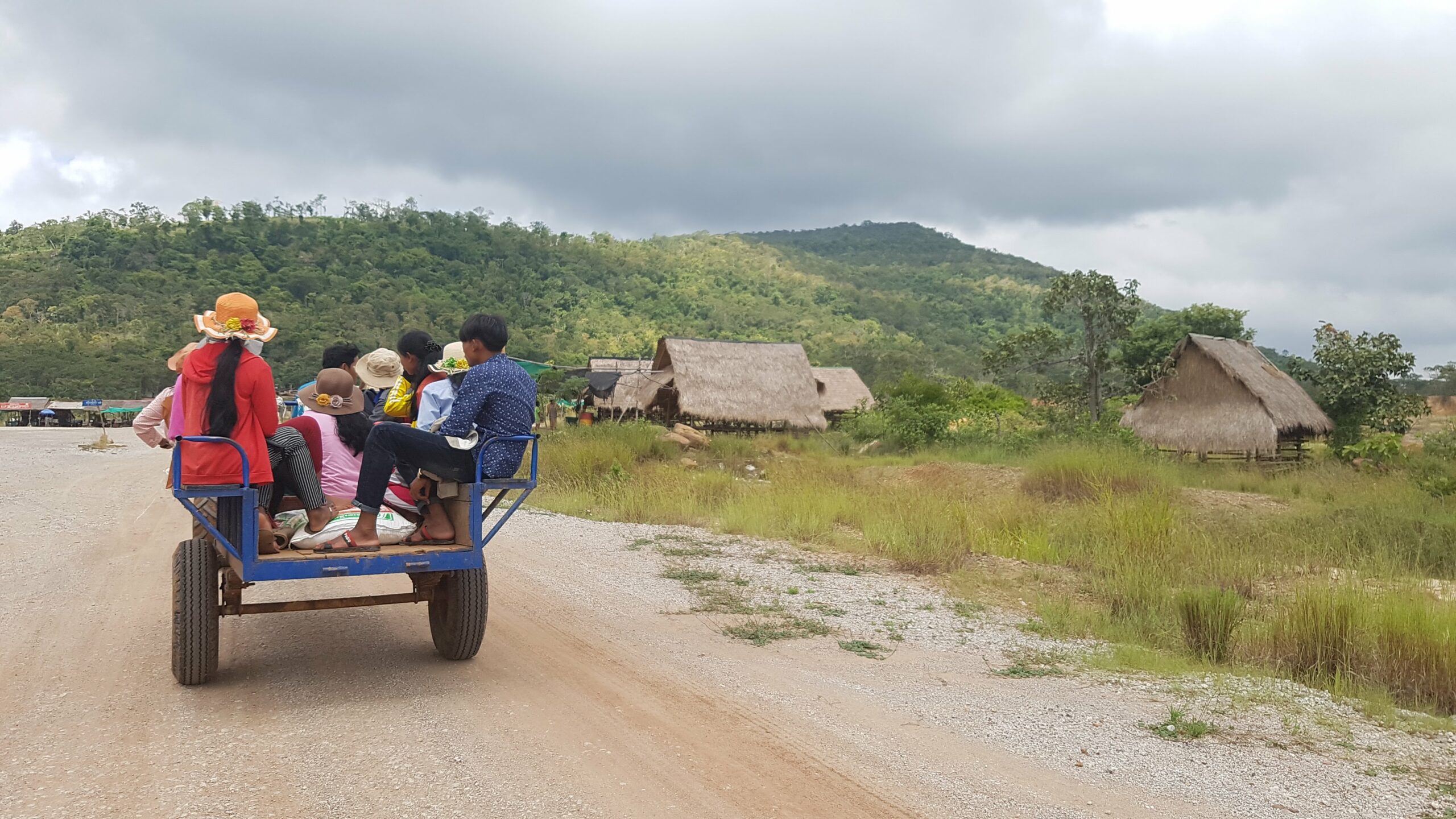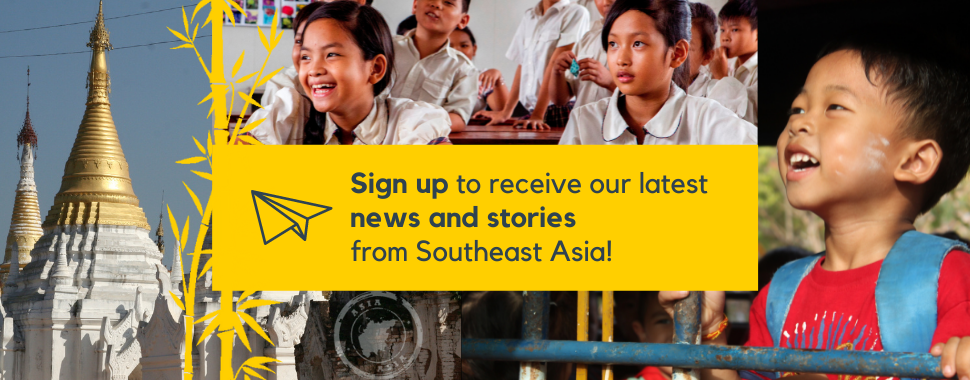Sisophon Education Centre
Helping our young people to continue their studies at the Sisophon Education Centre in Cambodia. SUPPORT THIS PROJECT
In an exclusive interview, his Excellency Dr VATHANA SANN, undersecretary of State for Education, Youth and Sports in Cambodia since 2018, tells Children of the Mekong about local issues in training and access to education. In charge of the Center for Digital Distance Education (CDDE) and the Research, Creativity and Innovation Fund (RCI-Fund), he insists on the importance of the relationship between teachers and students, especially in the context of the development of digital tools.
For the last 2 years, the COVID-19 world crisis has created new social and educational difficulties for impoverished children in the countryside and slums. How is Cambodia facing these unprecedented difficulties?
2020 and 2021 were the worst years. The years which had us face the most difficult challenge. It was the first time in 40 years that schools were closed for such a long time in Cambodia. Tough decisions had to be taken, especially when we had to turn schools into emergency hospitals to treat Covid-19 patients. Other schools became quarantine or vaccination centres. We had to reconsider our priorities regarding education. The goal was twofold: we had to make sure that the negative impact of the pandemic on the life and property of teachers, students, and school staff was minimal or nonexistent. At the same time, despite schools closing, we had to ensure the continuity of education and learning.
Regarding this last point, we witnessed the rise of innovative teaching methods in Cambodia. First is correspondence learning. Teachers kept up their pedagogical activities with their pupils by sending them exercises and handouts. In addition, there were the use of broadcasting systems such as radio stations and television for educational materials. In the month that followed schools closing in Cambodia, 77 television channels and many radio stations were requisitioned for live lessons and educational programs. Voluntary teachers were also sent to villages to meet pupils and lead small study groups. Finally, one must not forget the rise of digital education, online learning, the use of learning management systems, digital educational content production, etc
Online learning may not only be a financial challenge for the poorest families but also leads children to be exposed to the dangers of screens and the internet early on (addiction, online gaming, pornography, child abuse). How do you think families can anticipate these issues?
One must be careful! Foremost, as an educator, I wish to state and underline a deeply held conviction: online learning will not and will never replace the relationship between teachers and students. Ever since the digital transformation of the central education system in Cambodia, we have observed that the speed and the trend of the digital transformation of our society has been accelerated by 10 years compared to what we predicted. Although online learning has many benefits, we must recognize that shortcomings and issues remain within our education system. Over the recent period, I see no evidence that digital education can fill these gaps or solve these problems, on the other hand, we can see negative effects.
The first one is not directly linked to learning but to the closure of schools. This broke valuable personal and emotional relationships between teachers and students. Each of us remembers their first day of school, when the teacher was standing behind us and holding our hand to write the first letter in our notebook. As for me, I remember my teacher punished me because I was writing from bottom to top or from right to left!
These relationships are necessary, but school closings and online learning have been great barriers. All the while, the rapid growth of the economic sector and the high demand for related labor are causing many parents to separate from their children. This means that the responsibility for teaching and learning rests entirely with teachers. More and more parents are turning away from their duty as educators to their own children.

Regarding the digital divide, it has been recognizethat we are creating a new gap between the rich and poor students, between the students able to obtain that knowledge and those who will struggle to access the digital world. However, I do not agree to say that it is a financial challenge for families. I have asked a great number of internet providers in Cambodia. We have found that the internet package has been similarly priced before and during the pandemic. This means that although students have had to resort to more online learning, their spending has not increased. I see many comments saying that poor students can not read or watch videos online. To me, that is not entirely correct.
Finally, regarding the security of pupils on the internet, one must admit that those issues are well-known of both parents and students. It is probable in the past, these problems could go unnoticed in society, but with the rise of e-learning, everyone is aware that we must report child abuse, sexual discrimination, or even pornography among underage students. I hope that the legal tools to punish the culprits and raise awareness in society will follow.
Are there still populations in Cambodia who face difficulties accessing education?
I am new to the education sector and probably cannot answer this question in a definitive manner. I worked for the Ministry of agriculture and the Ministry of Finance and Economy in the past. However, I would like to share a figure with you. This is not a scientific statistic, but it highlights the urgency we feel. Assuming that today there are 1000 students enrolled in first grade in Cambodia, in the next six years, only 600 students will move on to secondary education. And in the next three years, only 430 students will still be in secondary school, out of those, only 280 students will graduate. That’s where we are: out of 1000 school children today, only 280 would survive in our education system and complete their 12 years of schooling. If we want to go further, we have to say that out of those 280 students, only 120 will have the chance to go to university. Only 12 of them will major in science and technology, and only one student will continue to do research or practical work in science and technology.
We must not forget this number: out of 1000 school children, only one will get involved in science and technology experiments. I will not go into the reasons for this problem because there is already a wealth of information, materials, and research. So, what needs to be done? The good news is that every day, every minute, the situation is improving. I’ve seen tremendous improvement in recent years in education and other social sectors. Take for example the school feeding program where every morning before going to class, students receive a hot meal. This program in itself seems simple and easy to implement. Many people would consider it a simple humanitarian activity, yet these programs are simple, yet they change the lives of hundreds of thousands of Cambodian children in rural areas. In 2008, I was invited to visit a rural school about 50 km from Phnom Penh. Children came to school and brought along their younger siblings to make sure they had at least one meal during the day. It was striking but also encouraging because we were at least able to feed them.
What are the priorities of your ministry?
The Ministry for Education, after a few years of reforms and structural development, had defined 8 priorities for the coming years.

The Khmer Rouge crisis led to the annihilation of the country’s entire intellectual elite and the establishment of a deleterious reign of corruption, including in the education sector. Today, has Cambodia fully healed its wounds?
I must be honest; this is not an easy question for me. I need a great deal of courage to answer it. My mother would often have nightmares and wake up in the middle of the night thinking of what she had to face during the Khmer rouge era. I also remember my father’s smile, which hid the tragic loss of his parents, his sister and his brother. This is not only my family’s story but also every Cambodian’s story, no one could escape in this country. Today, they are part of History and must be told in schools so the coming generations can remember and learn from them. The atrocities and crimes against humanity, especially the genocide committed by the Khmer Rouge will never be overlooked or forgotten.
As Cambodians, we are the survivors of this genocide, and the next generation must remember how much we suffered while many parts of the world purposefully looked away. Some countries even imposed economic sanctions after the liberation. Only peace matters today. The peace we find, seek and maintain in Cambodia is the answer we have been longing for. Peace through national reconciliation, through the steps we are taking towards Cambodian democracy and the return of the constitutional monarchy to Cambodia. This is the lesson that we have learned and that we can pass on to the world.
For the last 30 years, Children of the Mekong has been working, not only with the Khmer people in refugee camps, but also within the country. For the last 30 years, we have built schools, supported the poorest people to have access to a decent education, opened centres and shared houses. How does the government perceive this work?
Children of the Mekong is part of the history of childhood in Cambodia. Since the mid 1980’s, when the refugee camps between Thailand and Cambodia became buffers between the nightmare and the dream of a new life for thousands of Cambodians. We must thank Children of the Mekong, who understood the needs of Cambodian children. The organization was amongst the first to reach out to children and people of Cambodia. Children of the Mekong has become the family of hope: a family of trust, warmth and kindness for thousands of young people and adults. Unfortunately, I am unable to tell how much Children of the Mekong has brought to Cambodian children and how happy they are and how highly they regard the organization’s help. That would be an endless discussion!
At Children of the Mekong, we believe that the poorest children can become role models, deeply responsible people, committed to bettering society, to making it more equitable and more united. Do you share this belief? How do you see the future?
I deeply share this belief. For the last 70 years, since the day we received national independence, after the repeated sufferings of war and turmoil, the soul and body of the Cambodian people and country are finally united. For a long time, we lived as a nation without a soul. With a disunited body: separated families with refugees in other countries, and many still suffering in Cambodia. It took 70 years for Cambodia’s soul and body to be reunited at last. Our feeling of belonging is much stronger than what our tragic story had us live through. We believe in reconciliation, peace, and stability, which will allow us to fulfill our potential and achieve our aspirations. We are ready to face future challenges, global uncertainty such as political uncertainty, natural disasters, economic crisis or any other social issues.

Helping our young people to continue their studies at the Sisophon Education Centre in Cambodia. SUPPORT THIS PROJECT

Samrong is located in Oddar Meanchey province, in Northwest Cambodia. Education opportunities are severely limited and dropout rates remain high. Support this project
Learn more about our privacy policy here.
